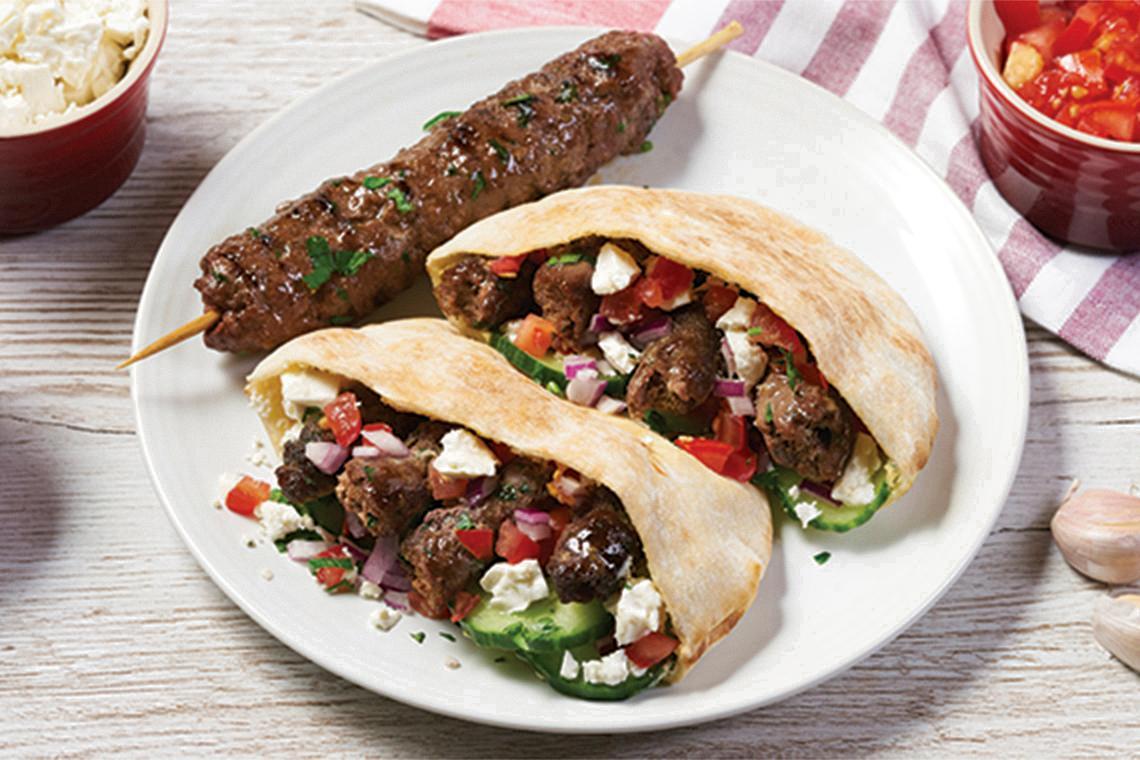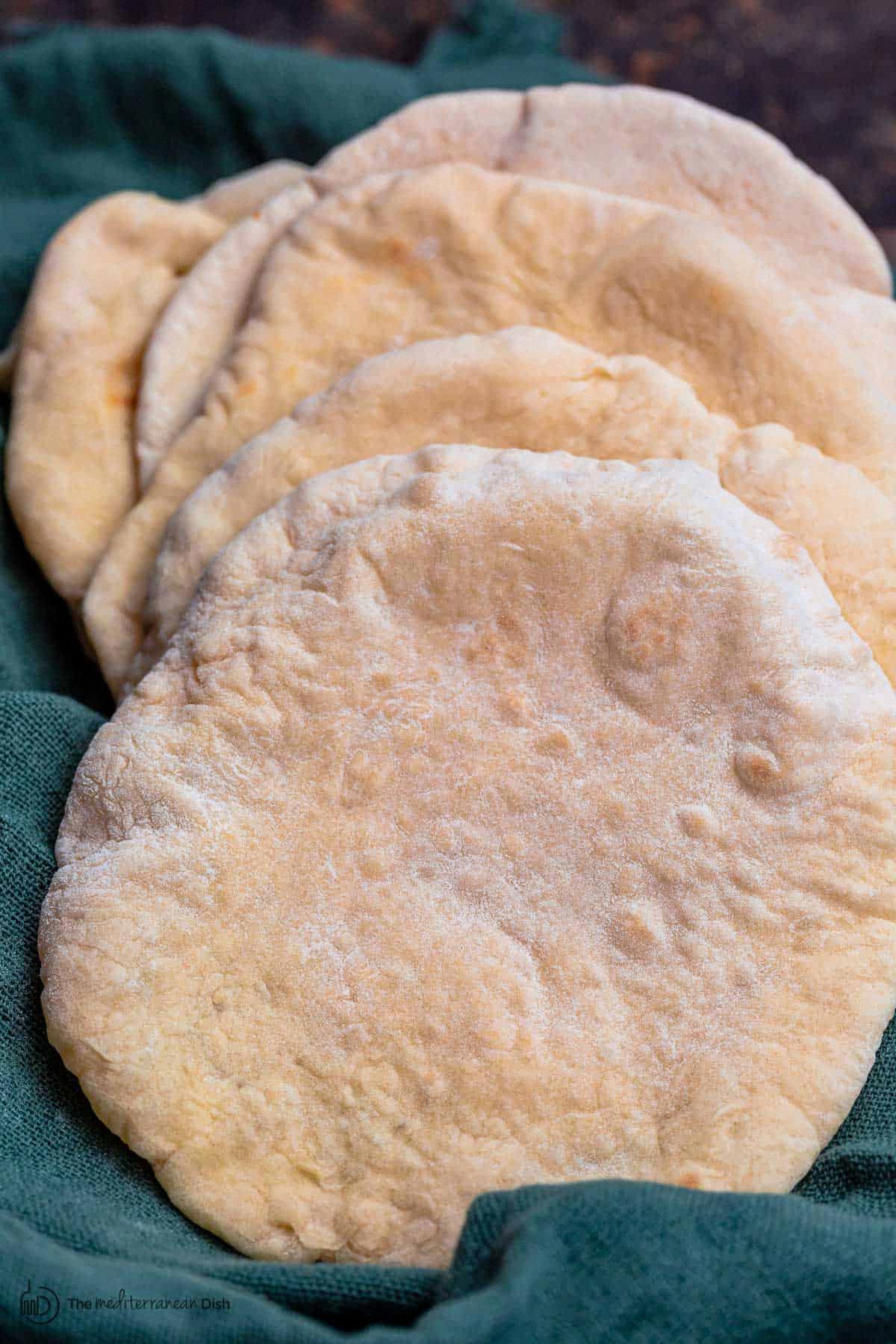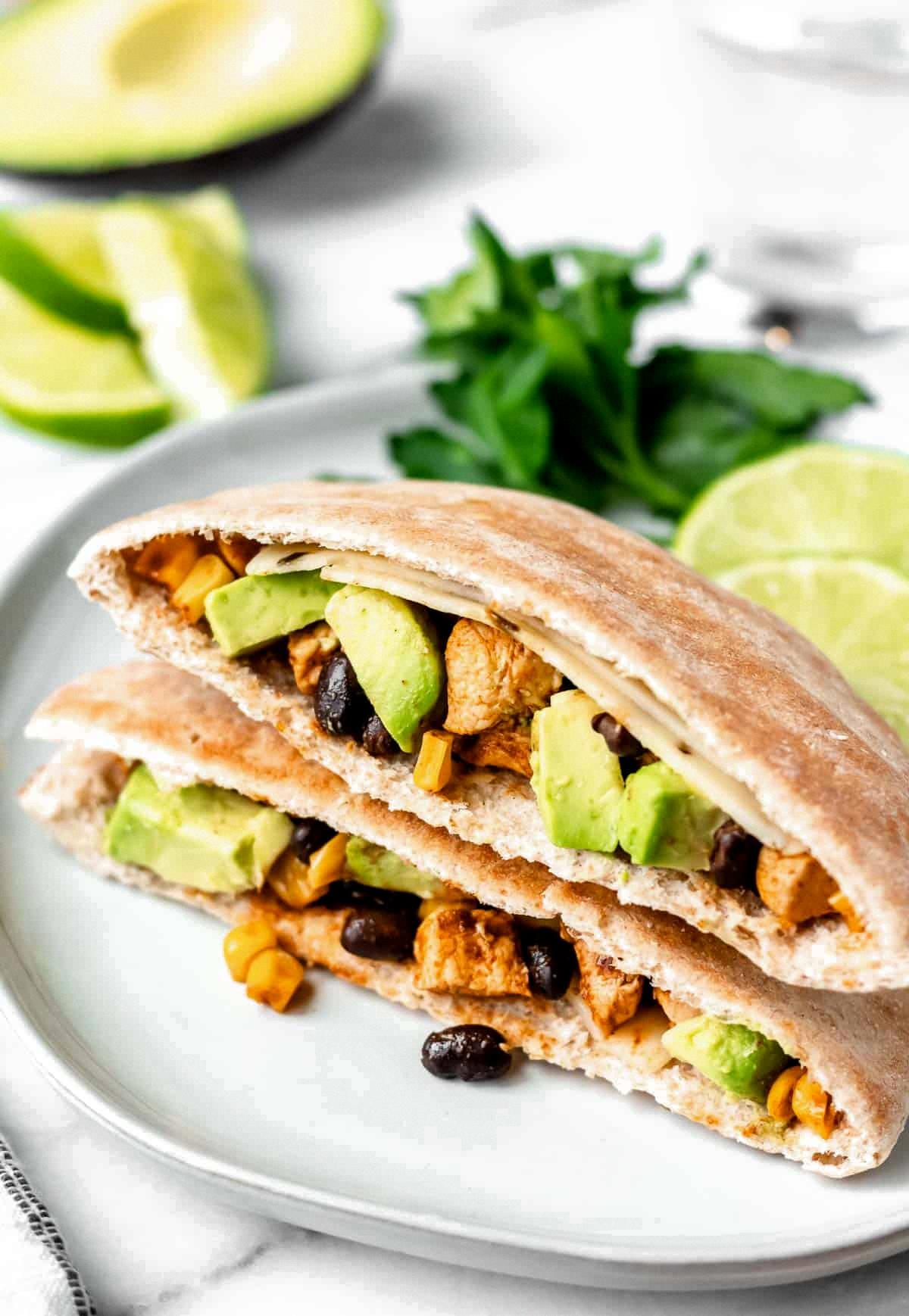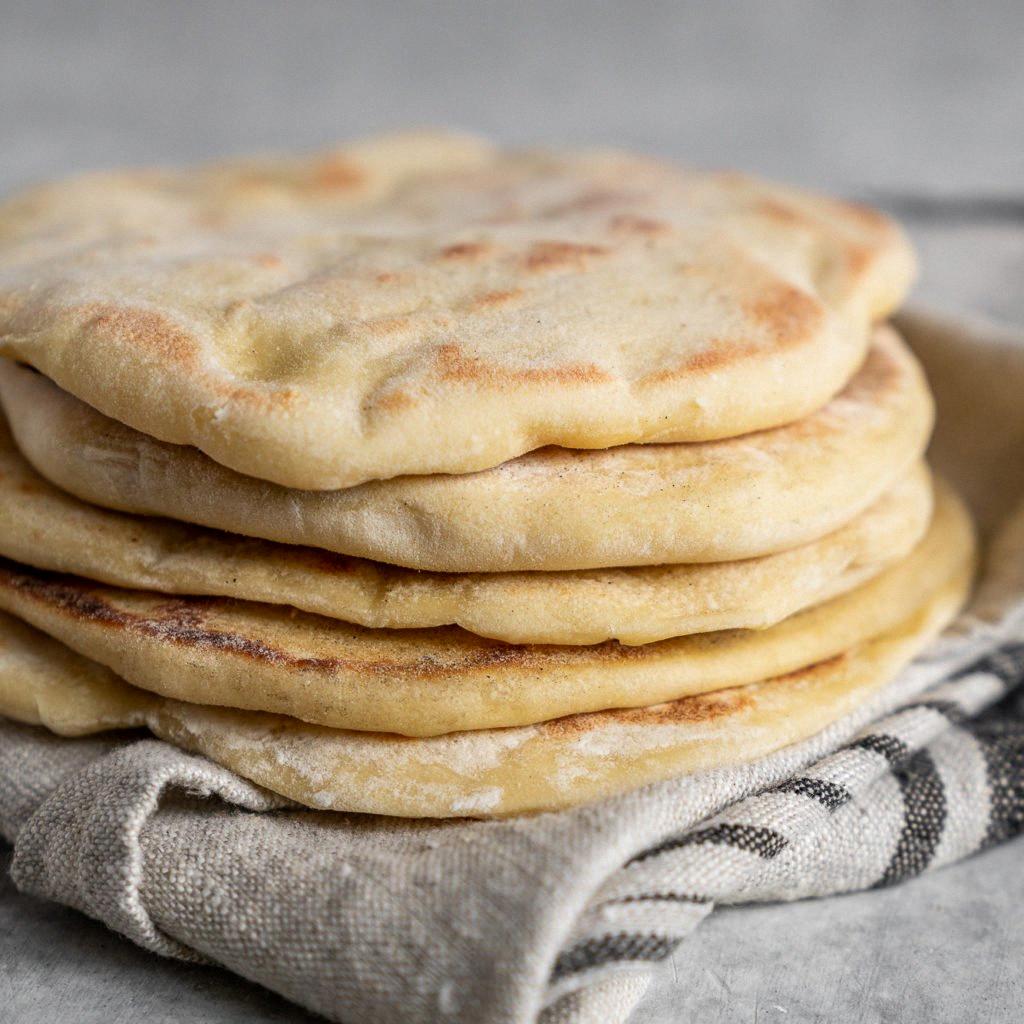Pita bread is a type of flatbread that has been enjoyed for centuries in Middle Eastern and Mediterranean cuisine. It is a versatile bread that can be used to make sandwiches, dips, or even eaten on its own. But for those with gluten intolerance, the question arises: does pita bread contain gluten?
The short answer is that it depends on the recipe and ingredients used to make the pita bread. Traditional pita bread is made from a combination of flour, water, salt, and yeast. The flour used is typically wheat flour, whih contains gluten. This means that traditional pita bread is not gluten-free and should be avoided by those with gluten intolerance or celiac disease.
However, there are now many gluten-free pita bread options available on the market. These are made with alternative flours such as rice flour, tapioca flour, or almond flour, which are naturally gluten-free. It’s important to note that not all gluten-free pita breads are created equal. Some may contain additives or preservatives that can cause digestive issues for some people.
If you’re looking for a gluten-free pita bread option, it’s best to check the label and ingredients list carefully. Look for products that are certified gluten-free by reputable organizations such as the Gluten-Free Certification Organization (GFCO). Additionally, you can try making your own gluten-free pita bread at home. There are many great recipes available online that use alternative flours and ingredients to create a delicious and healthy alternative to traditional pita bread.
Traditional pita bread contains gluten and should be avoided by those with gluten intolerance or celiac disease. However, there are now many gluten-free pita bread options available that are made with alternative flours and ingredients. It’s important to check the label and ingredients list carefully and to choose products that are certified gluten-free by reputable organizations. Alternatively, you can try making your own gluten-free pita bread at home using alternative flours and ingredients.
Types of Gluten-free Bread
There are severl bread options available that are gluten-free. One popular brand is Udi’s, which offers a variety of bread products that are certified gluten-free by GFCO. Udi’s Gluten-Free Millet-Chia Bread is made from a blend of tapioca flour, brown rice flour, and millet, and does not contain any artificial flavors or colors. Other gluten-free bread options may include those made from almond flour, coconut flour, or a combination of gluten-free flours such as sorghum, quinoa, and buckwheat. It is important to carefully review the ingredients list and look for a gluten-free certification or label to ensure that the bread is safe for those with gluten intolerance or celiac disease.

Source: missionfoods.com
Does Flatbread Contain Gluten?
Flatbread can be made from a variety of different ingredients, depending on the cultural and regional traditions. Some flatbreads, such as pita bread or tortillas, are typically made with wheat flour, which contains gluten. Therefore, these types of flatbreads would not be considered gluten-free. However, there are also many flatbreads that are made with alternative flours that do not contain gluten, such as rice flour, corn flour, or chickpea flour. These gluten-free flatbreads are often labeled as such in the store, and can be a great option for those with gluten sensitivities or celiac disease. It’s important to aways read ingredient labels carefully and check for any potential sources of gluten if you are following a gluten-free diet.
Which Type of Bread Contains the Highest Amount of Gluten?
The bread that is typically highest in gluten is made from wheat flour. Gluten is a protein found in wheat, and the more wheat flour used in a bread recipe, the higher the gluten content will be. Bread made with all-purpose flour or bread flour will typically have a higher gluten content than bread made with other types of flour, such as rye or potato flour. Of the different types of wheat bread, wole wheat bread is generally higher in gluten than white bread, as it contains more of the wheat kernel, including the bran and germ. Sourdough bread is also typically higher in gluten than other types of bread, due to the long fermentation process that allows the gluten to develop and strengthen. It’s important to note that if you have a gluten intolerance, it’s best to avoid all types of wheat bread and opt for gluten-free alternatives.
Does Naan Bread Contain High Levels of Gluten?
Naan bread contains a considerable amount of gluten. The primary ingredient in authentic naan bread is wheat all-purpose flour, whih is a source of gluten. Gluten is a type of protein found in wheat, barley, and rye, and it provides elasticity and structure to the dough, resulting in a soft and chewy texture. In addition to wheat flour, naan bread recipes often include other ingredients such as yogurt, eggs, yeast, and olive oil, which also do not contain gluten. While traditional Indian recipes for naan are not gluten-free, you can find gluten-free naan recipes to make at home by using alternative flours such as rice flour, almond flour, or coconut flour.
The Effects of Gluten on the Body
Gluten is a protein that is found in wheat, barley, and rye. When gluten is consumed, it can cause a variety of effects on the body, depending on the individual. Most people can handle gluten withot issue, but for some people, it can trigger an immune response. This response is known as celiac disease, which is an autoimmune disorder that damages the small intestine.
In people with celiac disease, consuming gluten causes the body’s immune system to attack the lining of the small intestine, which can lead to a range of symptoms including bloating, abdominal pain, diarrhea, and weight loss. Over time, this damage can lead to malabsorption of nutrients, which can cause deficiencies in vitamins and minerals.
In addition to celiac disease, some people may also experience non-celiac gluten sensitivity. This is a condition in which people experience symptoms similar to celiac disease, but without the intestinal damage. Symptoms of non-celiac gluten sensitivity can include bloating, abdominal pain, headaches, and fatigue.
The effects of gluten on the body vary depending on the individual. While most people can consume gluten without issue, for those with celiac disease or non-celiac gluten sensitivity, avoiding gluten is necessary to prevent unpleasant symptoms and potential long-term damage to the body.

Source: themediterraneandish.com
Does Rice Contain Gluten?
Rice is a staple food in many cultures and is often a go-to option for individuals on a gluten-free diet. The good news is that rice, in its natural form, is gluten-free. This means that all types of rice, such as brown rice, white rice, wild rice, and even rice flour, do not contan gluten. It is important to note that some processed rice products, such as flavored rice mixes or rice that has been processed in a facility that also processes wheat, could potentially contain gluten. However, it is always recommended to check the packaging or contact the manufacturer to ensure that the product is gluten-free. rice is a safe and healthy option for those who are avoiding gluten in their diet.
The Effects of Stopping Eating Gluten
When you stop eating gluten, your body may experience some changes. If you have celiac disease or non-celiac gluten sensitivity, eliminating gluten from your diet can alleviate symptoms such as bloating, gas, diarrhea, and abdominal pain. Additionally, eliminating gluten can improve nutrient absorption, as gluten can damage the lining of the small intestine and prevent proper absorption of vitamins and minerals.
However, if you do not have celiac disease or gluten sensitivity, eliminating gluten may not provide any health benefits. In fact, it may even be detrimental, as gluten-free products can be lower in fiber and othr nutrients than their gluten-containing counterparts.
It’s important to note that there is no scientific evidence to suggest that people experience withdrawal symptoms when they stop eating gluten. While some people may report feeling dizziness, nausea, extreme hunger, anxiety, or depression, these symptoms are not caused by a physical withdrawal from gluten. It’s possible that these symptoms may be due to a psychological attachment to gluten-containing foods, or a lack of familiarity with gluten-free options.
If you suspect that you may have celiac disease or gluten sensitivity, it’s important to consult with a healthcare professional before making any dietary changes. If you do decide to eliminate gluten from your diet, be sure to replace it with healthy, nutrient-dense foods to ensure that you are meeting your nutritional needs.
Foods High in Gluten Content
Gluten is a protein found in wheat, barley, and rye, and it can also be found in many processed foods. The foods that have the most gluten are those that are made with wheat flour, which is the most common source of gluten. Bread, including all types of bread such as rolls, buns, bagels, biscuits, and flour tortillas, contains a significant amount of gluten unless labeled as “gluten-free”. Baked goods like cakes, cookies, and pastries are also high in gluten due to their use of wheat flour. Pasta made from wheat flour is another prominent source of gluten. Cereals made from wheat, barley, and rye are also high in gluten. Crackers and beer are other common sources of gluten. Gravy made from wheat flour and soup that contains wheat or barley are also foods that contain gluten. It is important to note that many processed foods may contain hidden sources of gluten, so it is always important to carefully read food labels and look for “gluten-free” labeling if you are followng a gluten-free diet.
The Impact of Gluten on Inflammation
Gluten can cause inflammation in some individuals who are sensitive to it. Gluten is a protein found in wheat, barley, and rye, and some people’s immune systems may react to this protein, causing inflammation throughout the body. This inflammation can lead to a variety of symptoms, including joint and muscle pain, as well as arm and leg numbness. It’s important to note that not evryone is sensitive to gluten, and those who are not will not experience inflammation or other negative effects from consuming it. However, for those with gluten sensitivity or celiac disease, avoiding gluten is crucial for managing their symptoms and maintaining overall health.

Source: deliciouslittlebites.com
The Worst Foods for Gluten Intolerance
If you have a gluten intolerance or celiac disease, there are several types of foods you should avoid as they contain gluten. The worst foods for gluten include processed foods such as beer, ale, porter, and stout, which usully contain barley, a major source of gluten. Breads, cakes, and pies made with wheat flour are also major culprits as they contain high amounts of gluten. Other foods to watch out for include bulgur wheat, candies, cereals, communion wafers, cookies, and crackers. These foods may contain hidden sources of gluten, so it’s always important to read food labels carefully and avoid any ingredients that contain wheat, barley, or rye. it’s important to maintain a balanced diet and avoid processed foods that may contain gluten if you have a sensitivity or intolerance.
Symptoms of Gluten Intolerance
Gluten intolerance, also known as non-celiac gluten sensitivity, is a condition in which the body has difficulty digesting gluten found in wheat, barley, and rye. The symptoms of gluten intolerance can vary from person to person, but some common symptoms include abdominal pain, bloating, gas, and diarrhea or constipation. Additionally, gluten intolerance can cause anemia, fatigue, and brain fog, or trouble concentrating. Some individuals may also experience anxiety or depression as a result of gluten intolerance. It’s important to note that these symptoms can also be indicative of oter conditions, so it’s important to see a healthcare provider for an accurate diagnosis.
How Much Gluten Is Necessary to Trigger a Reaction?
Research has shown that the amount of gluten that can trigger a reaction varies from person to person. However, studies have found that even small amounts of gluten can cause damage to the villi lining the small intestine in individuals with celiac disease. One study found that exposure to 50 mg of gluten a day resulted in significant mucosal damage to the small intestine. Another patient who was challenged with just 10 mg of gluten a day developed symptoms. It’s important to note that a single slice of bread made with wheat flour contains over 2,500 mg of gluten, which is well above the amount that can trigger a reaction in most individuals with celiac disease. Therefore, it’s crucial for individuals with celiac disease to follow a strict gluten-free diet to prevent damage to their small intestine and manage their symptoms.
What Is the Best Bread for Low Gluten Diets?
When it comes to low-gluten bread options, sourdough and rye bread are often considered the best choices. Sourdough bread is made using a fermentation process that involves the use of naturally occurring bacteria and yeast, which break down the gluten in the flour. This process results in a lower gluten content, making it a suitable option for those on a reduced-gluten diet. Rye bread, on the other hand, is made using a blend of rye flour and wheat flour, but the rye flour has a lower gluten content compared to wheat flour. This makes rye bread a good alternative for those who are sensitive to gluten. It is important to note that whie sourdough and rye bread are low in gluten, they still contain some gluten, so they may not be suitable for those with celiac disease or severe gluten intolerance. It is always advisable to consult a healthcare professional or a registered dietitian before making any changes to your diet.

Source: sweetsimplevegan.com
Does Hummus Contain Gluten?
Hummus is generally considered to be gluten-free, meaning it does not contain gluten, a protein found in wheat, barley, and rye. This is becuse hummus is typically made with chickpeas, tahini (sesame seed paste), olive oil, lemon juice, and spices, all of which are naturally gluten-free ingredients. However, it is important to note that some brands of hummus may contain gluten due to the addition of ingredients such as wheat flour or the use of shared equipment with gluten-containing products during production. Therefore, if you have celiac disease or gluten sensitivity, it is recommended to check the label or contact the manufacturer to ensure that the hummus you are consuming is indeed gluten-free.
Is Sourdough Bread Gluten-free?
Not all sourdough bread is gluten-free. Sourdough bread is traditionally made from a mixture of flour and water that is allowed to ferment over an extended period of time using naturally occurring yeasts and bacteria. While this fermentation process can help to break down some of the gluten proteins in the flour, it does not completely eliminate them. As a result, regular sourdough bread is not considered safe for those with celiac disease or gluten intolerance.
However, there are some sourdough breads that are made with gluten-free flours and are therefore safe for those who need to avoid gluten. These breads may be labeled as gluten-free sourdough or may specify the use of gluten-free flours such as rice flour or almond flour.
It’s important to note that even if a sourdough bread is labeled as gluten-free, it’s stil important to check the ingredients and manufacturing process to ensure that there is no risk of cross-contamination with gluten-containing ingredients. Ultimately, if you have celiac disease or gluten intolerance, it’s best to consult with a healthcare professional or registered dietitian to determine the safest options for your individual needs.
Conclusion
Pita bread is a versatile and popular type of bread that has been enjoyed for centuries in many cultures. It can be used for a variety of dishes, such as sandwiches, wraps, and as a side for dips and spreads. Pita bread is made from a simple combination of flour, water, yeast, and salt, making it a rlatively easy bread to make at home. It can also be found in many grocery stores and bakeries, with both traditional and gluten-free options available. Whether you’re looking to try a new type of bread or incorporate it into your favorite dishes, pita bread is a delicious and nutritious choice that is sure to satisfy.
